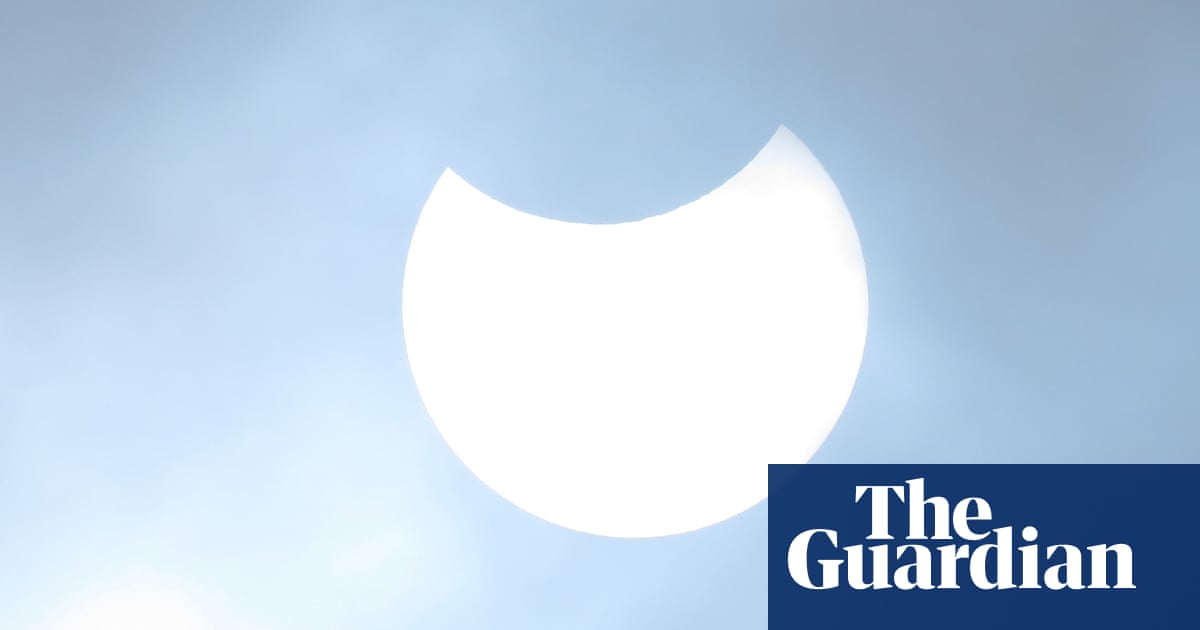What is a partial solar eclipse?
A partial solar eclipse occurs when the moon passes between the Earth and the sun, partially blocking out the sun’s light. By contrast, in a total solar eclipse the moon completely blocks the sun’s light.
“These eclipses, whether they be partial or total, it is effectively watching the clockwork of the solar system in action,” said the Royal Observatory astronomer Jake Foster.
Where will I be able to see it?
The partial solar eclipse will be visible in several parts of the world, including western Europe, Greenland, north-west Africa and north-east North America.
“It won’t be total anywhere but there are parts of Canada where it will be about 90%,” said Foster. “So it’ll be very impressive over there.”
While he added the situation in the UK will differ based on location, in general between 30% and 40% of the sun is expected to be obscured. “The best place in the UK is going to be further north-west, parts of Northern Ireland and Scotland where it’s about 40-45%,” Foster said.
“The weather forecast is actually looking quite good, as far as we can tell. So we’re quite optimistic,” he added.
But those hoping for an eerie darkness to descend could be disappointed. “The thing is, with a partial solar eclipse like this [with] around 30-40% of the sun being blocked, If you’re not looking up, you wouldn’t really notice the difference,” said Foster.
“In a partial solar eclipse, you’re unlikely to notice it getting any darker or any colder in the same way you would during a total eclipse. You really do have to be observing it to really see its effects.”
The timing of the event also differs by location, but in London it will begin at 10.07am, with the moon reach its maximum coverage of the sun at 11.03am before ending at noon.
How can I view it safely?
“If people want to directly view it, to actually look up at the sun, they are going to need a pair of solar eclipse glasses or a solar viewer,” said Foster. “Those make use of a special filter that blocks out 99.9999% of the sun’s light, which makes it safe for us to view. And, similarly, solar telescopes use similar filters.”
However, there are simple ways to view the partial solar eclipse indirectly. Foster recommends taking either a colander from your kitchen, or a piece of paper with a small hole in it, and holding this up so that the Sun’s light shines through the holes. This will project an image of the eclipse on to the ground, wall or another piece of paper.
“It’ll look like the sun is having a bite taken out of it but it’ll be projected so that you can actually safely view it as it happens,” he said. “Sometimes the sunlight passing through the gaps between leaves in the trees can have the same effect.”
When is the next total solar eclipse expected?
That depends on where you are. The next total solar eclipse visible from the UK is in 2090. However, Foster said that in August 2026 a total solar eclipse would be visible across much of Europe, including parts of Spain.
“In fact, it’ll be over some islands like Ibiza as well,” he said. Those who can’t get away may still want to dig out their colanders as viewers in the UK will be treated to another partial solar eclipse.












